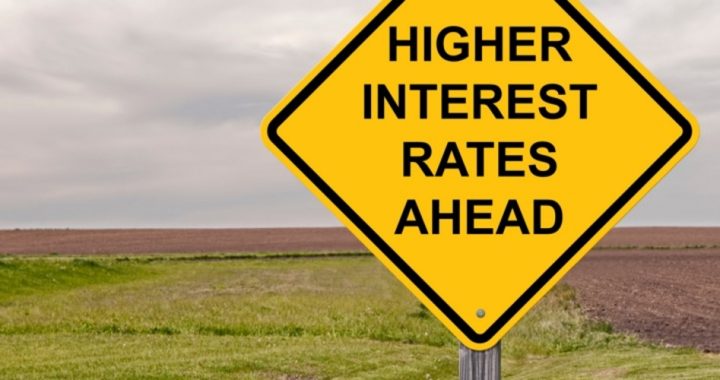
Following the unanimous and much-anticipated decision by the Federal Reserve to raise interest rates by another quarter of a percent on Wednesday, the new chairman, Jerome Powell, said, “The economic outlook has strengthened in recent months. Several factors are supporting this outlook: fiscal policy [i.e., Trump’s tax cuts to individuals and corporations] has become more stimulative, ongoing job gains are boosting incomes and confidence, foreign growth is on a firm trajectory, and overall financial conditions remain accommodative.”
This raises the question: If everything is so rosy, why mess with the formula? Because he and the board see trouble ahead, and they’re trying to get ahead of it. If they do nothing, the economy will “overheat” and the Fed will then have to play “catch-up” by raising interest rates rapidly to cool it off. That has the predictable consequence of sending the economy into a recession. On the other hand, if the Fed raises rates too soon, the economy will slow from its present torrid pace. As Powell explained, “We’re trying to take the middle ground, and the [Open Market] committee continues to believe that the middle ground consists of further gradual increases in the federal-funds rate.”
The underlying false assumption for all of this is that individuals such as Powell and his Keynesian “experts” populating the Fed’s Open Market Committee can direct the economy in any way they wish. History is replete with examples that expose this to be a massive canard, but they persist anyway, using outdated and useless tools such as the Phillips Curve to guide their path.
The Phillips Curve purports to predict the future by posing the inverse relationship between unemployment and wages. As unemployment drops, wages increase as employers compete for a steadily decreasing pool of available workers. That’s a provable postulate: Whenever the supply of something drops, prices paid for it tend to rise. Labor is a commodity, just like wheat or gasoline. If the supply drops, then the cost to obtain it will increase.
But here’s where Keynesians on the board of the Fed’s Open Market Committee go off the track: They have long held that increasing wages portends price increases all across the economy, i.e., inflation. Hence, something must be done! Powell wants to start doing that “something” now.
Let’s look. The best estimates are that the U.S. economy is growing nicely, at around 2.7 percent annually. Optimists are hoping for three percent or better, but the reality of a diminishing pool of workersstands in the way. In 2015, the economy added 2.71 million jobs. In 2016, it added 2.5 million jobs. In 2017, it added 2.28 million jobs. Along the way the unemployment rate dropped from 5.7 percent to 4.1 percent. Barring some miracle, unemployment will — as Powell correctly anticipates — continue to drop, perhaps to levels not seen since the 1960s (around 3.6 percent).
Also predictably, wage growth is increasing, with the latest from the Labor Department showing 2.5-percent gains year-over-year, keeping wage earners ahead of price increases.
Inflation, properly defined, is an increase in the money supply. And the Federal Reserve is the only entity legally allowed to expand the supply of the U.S. currency. According to its own internal reports, its “adjusted monetary base” has been stagnant since August 2014 and has been shrinking ever since. This is in line with its announced policy of letting some of its vast balance sheet of U.S. treasury securities mature without replacing them with new purchases. In other words, the Fed has actually been engaging in shrinking the money supply rather than increasing it.
And this, also predictably, has kept price increases at less than two percent a year since then.
But Powell and his panel of experts see things differently. By seeking that “middle ground,” wherever that is, they are setting the stage for a recession. The board announced that there will be eight quarter-point hikes in the Fed-funds rate (the rate at which banks borrow from each other overnight) between now and the end of the year 2020. This will bring the rate from its current level of 1.50 to 1.75 percent, to 3.5 percent — more than a doubling in less than three years.
It’s hard not to ascribe a political motive to the Fed’s plans. A Fed-funds rate of 3.5 percent in three years will slow banking lending greatly, will take the present shine off the stock market in favor of bonds, and likely trigger the recession that bears like David Stockman and Ron Paul have been predicting and that Powell says he is trying to avoid.
Just in time for the 2020 presidential election campaign.
Image: JimVallee via iStock / Getty Images Plus
An Ivy League graduate and former investment advisor, Bob is a regular contributor to The New American magazine and blogs frequently at LightFromTheRight.com, primarily on economics and politics. He can be reached at [email protected].



